new blog
Composite materials are all combined by reinforcing fibers and a plastic material, the role of the resin in the composite material is crucial, the selection of the resin determines a series of characteristic process parameters, part of the mechanical properties and functionality (thermal properties, flammability, environmental resistance, etc.), the resin properties are also a key factor in recognizing the mechanical properties of the composite material. When the resin is selected, a series of processes and properties that determine the composite material are naturally determined.
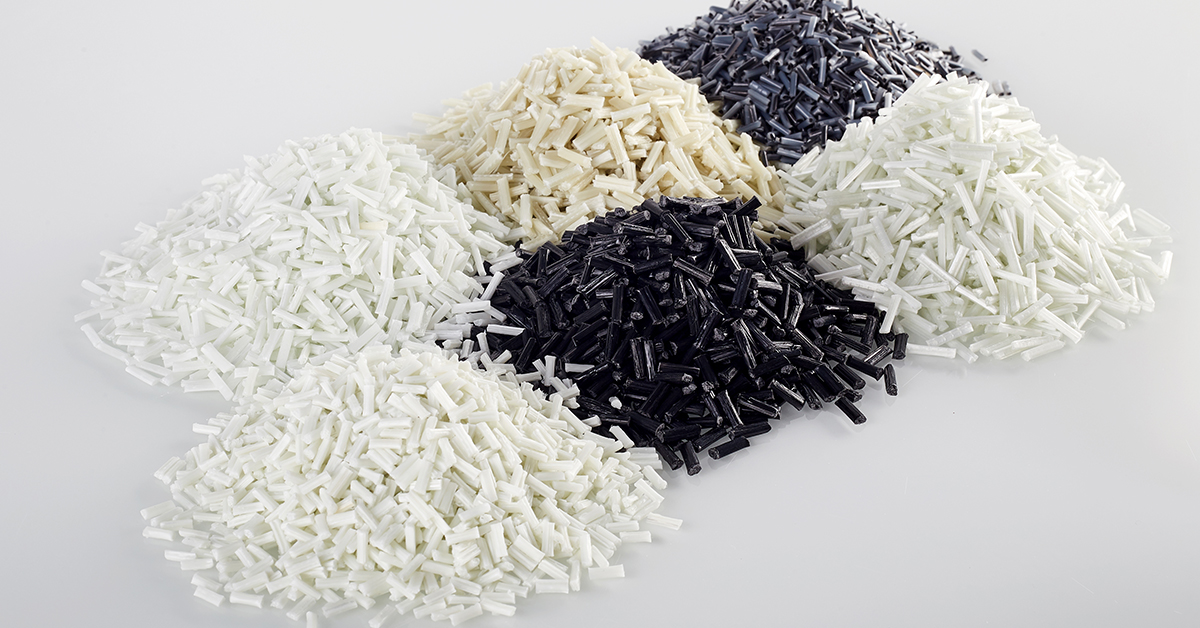
Polypropylene(PP):
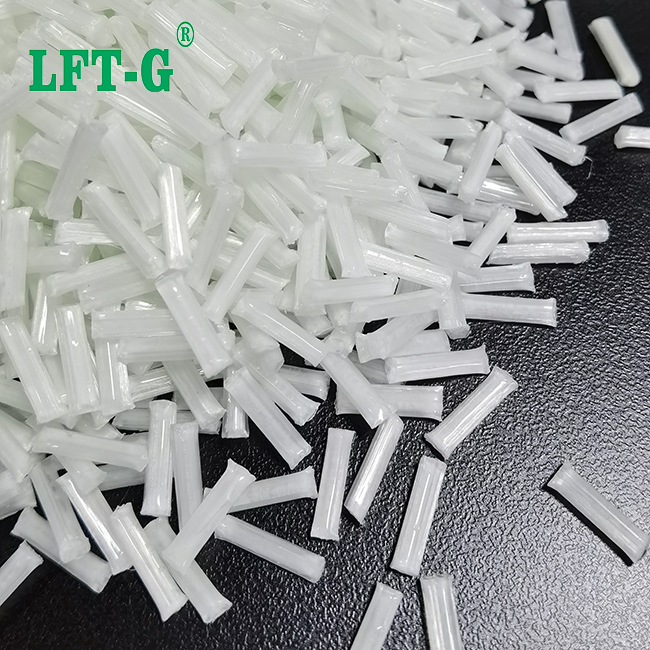
PP-NA-LGF
1. Physical Properties
Non-toxic, odorless, tasteless milky white highly crystalline polymer.
Small density: 890-910kg/m3, is one of the lightest varieties of plastic.
Strong hydrophobicity: water absorption in water 24h is only 0.01%.
Good molding properties, but the shrinkage rate is large, thick-walled products are easy to concave. Products with good surface gloss, easy to color.
2. Mechanical properties
PP's high crystallinity, structural regularity, and thus has excellent mechanical properties. But at room temperature and low temperature, due to its own molecular structure of high regularity, so the impact strength is poor, the most prominent performance of PP is the bending fatigue resistance.
3. Thermal properties
PP has good heat resistance, products can be sterilized at temperatures above 100 ℃, in the absence of external conditions, 150 ℃ is not deformed. Our company has heat-resistant grade PP composite materials.
4. Chemical stability
PP's chemical stability is very good, in addition to concentrated sulfuric acid, concentrated nitric acid erosion, a variety of other chemical reagents are relatively stable; but low molecular weight aliphatic hydrocarbons, aromatic hydrocarbons and chlorinated hydrocarbons can make polypropylene soften and dissolve, while its chemical stability with the increase in the degree of crystallinity has also improved, so PP is suitable for the production of a variety of chemical piping and fittings, corrosion prevention effect is good.
5. Electrical properties
PP's high-frequency insulation properties are excellent, because it almost does not absorb water, so the insulation properties are not affected by humidity. It has a high dielectric coefficient, and with the rise in temperature, can be used to make heated electrical insulation products. It also has a high breakdown voltage, which makes it suitable for use as electrical fittings and the like. It has good resistance to voltage and arcing, but has a high degree of static electricity. Due to the presence of lateral methyl groups in PP, alternating tertiary carbon atoms appear on the molecular chain, which are highly susceptible to oxidizing reactions in contact with copper ions, resulting in poor oxidation and radiation resistance of polypropylene. Therefore, in contact with copper use occasions, copper inhibitors must be added.
6. Weathering resistance
PP is very sensitive to ultraviolet light, need to add add additives to improve its aging resistance. We have UV-resistant grade PP composites.
Polyamide series(PA):
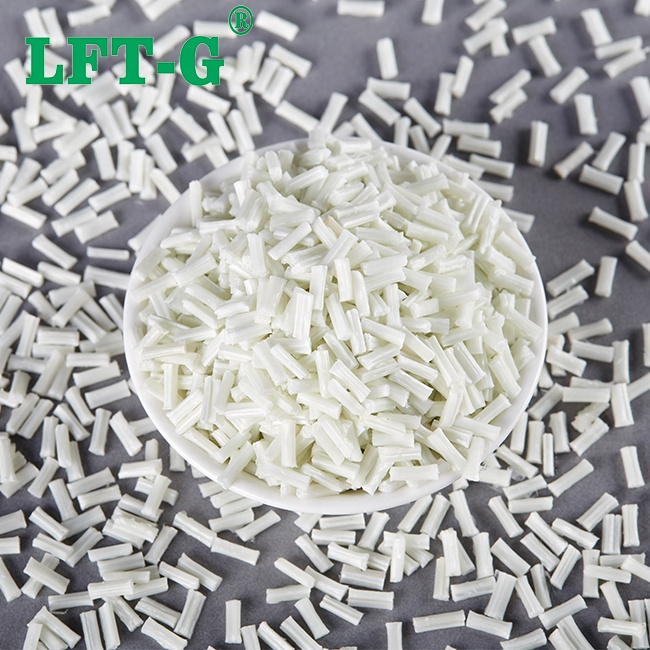
PA6-NA-LGF
Polyamide is commonly known as nylon (Nylon), the English name Polyamide (PA), it is a macromolecule repeating units in the main chain containing amide groups in the polymer of the general term.
Polyamide can be produced by ring-opening polymerization of lactam, can also be produced by the condensation of diamine and dibasic acid. Polyamide plastics are developed on the basis of polyamide fibers, is the first thermoplastic that can withstand the load, but also the five general engineering plastics in the production of the largest, most varieties, the most widely used varieties.
Its main varieties are nylon 6, nylon 66, nylon 11, nylon 12, nylon 610, nylon 612, nylon 46, nylon 1010 and so on. Among them, Nylon 6 and Nylon 66 have the highest production, accounting for more than 90% of the production of nylon. Nylon 11, nylon 12 has outstanding low-temperature toughness; nylon 46 has excellent heat resistance and rapid development; nylon 1010 is produced from castor oil as raw material, which is a unique variety in China. Our company now produces nylon 6, nylon 66, and nylon 12.
Nylon engineering plastics generally have good mechanical properties, electrical properties, heat resistance and toughness, but also has excellent oil resistance, abrasion resistance, self-lubricating, chemical resistance and molding processability.
1. Toughness
Polyamide PA66 has the highest hardness and rigidity, but the worst toughness. Polyamide according to the toughness of the high and low ranking: PA66 < PA6 < PA12.
2. Physical properties
Nylon water absorption is relatively high, the greater the proportion of acyl-ammonia bond, the higher the water absorption rate, specifically for nylon 6> nylon 66> nylon 12. but after filling the long fiber, the water absorption rate will be greatly reduced.
3.Mechanical properties
The tensile strength and impact strength of nylon at room temperature are high, but the impact strength is not as high as PC and POM. With the increase of temperature and humidity, the tensile strength decreases sharply, while the impact strength increases significantly. The strength of glass fiber reinforced nylon is little affected by temperature and humidity. Nylon's fatigue resistance is better, second only to POM, glass fiber reinforced treatment can be improved by about 50%.
Nylon creep resistance is poor, not suitable for the manufacture of precision stressed products, but glass fiber reinforced can be improved.
Nylon friction and wear resistance is excellent, is a commonly used wear-resistant plastic varieties. Different varieties of friction factor is not much difference.
4. Thermal properties
Nylon's heat distortion temperature are not high, generally in the 50 ~ 75 ℃, reinforced with glass fiber can be increased by more than 4 times, up to 200 ℃.
5. Electrical properties
Nylon is an insulating material.
Thermoplastic Polyurethane(TPU):
1. high mechanical strength
TPU products have outstanding load-bearing capacity, impact resistance and shock absorption properties.
2. outstanding cold resistance
TPU's glass transition temperature is relatively low, at -35 degrees Celsius still maintains good elasticity, flexibility and other physical properties.
3. a wide range of hardness
by changing the ratio of TPU reaction components, you can get different hardness products, and with the increase in hardness, its products still maintain good elasticity and wear resistance.
4. good resilience
TPU resilience refers to the degree of deformation stress relief to quickly restore its original state, expressed in terms of recovery energy, that is, the ratio of deformation retraction work to the work required to produce deformation. It is a function of the elastomer dynamic modulus and internal friction, and is very sensitive to temperature.
5. good processing performance
TPU can be processed using common thermoplastic materials processing methods, such as injection molding, extrusion, calendering and so on. At the same time, TPU and some polymer materials co-processing can be obtained performance complementary polymer alloys. Resistant to oil, water, mold, good recyclability.
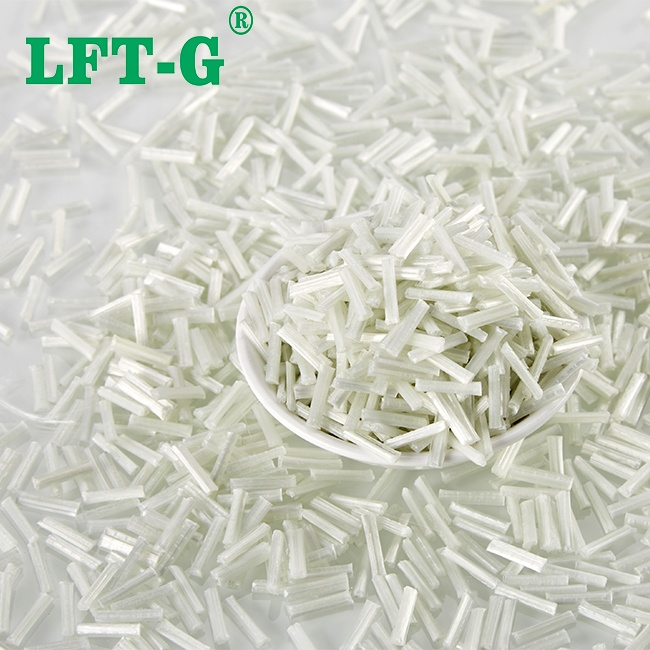
TPU-NA-LGF
polyphenylene sulfide(PPS):
It is a kind of thermoplastic special engineering plastics with excellent comprehensive performance, its outstanding features are high temperature resistance, corrosion resistance and superior mechanical properties, the products fall on the ground with metal ringing sound.
PPS has excellent heat resistance, cold -40 ° C, electrical properties, chemical resistance, radiation resistance, flame retardant properties, such as pure PPS, the ultimate oxygen index can be as high as 44%, using glass fiber ( GF ) / mineral filled PPS oxygen index can be as high as 53%. the molecular structure of PPS determines the performance of the endowed with a unique physicochemical properties.
1.Physical Properties
Electrical insulation (especially high frequency insulation)
The dielectric constant is very small. Dielectric loss is low, it is an excellent electrical insulating material.
General toughness, rigidity is very good, but brittle, prone to stress cracking; through the addition of glass fibers or other reinforcing materials modified, can make the impact strength to greatly improve heat resistance and other mechanical properties. Suitable for the production of heat-resistant parts, insulating parts and chemical instruments, optical instruments and other parts.
Good molding, small moisture absorption, suitable for drying after molding.
2.Chemical properties
Excellent flame retardancy
Its chemical structure is quite stable, and contains a flame retardant element - sulfur, pure PPS in the thickness of 0.8mm can pass UL-94 V0 level. Pure PPS can pass UL-94 V0 grade when the thickness is 0.8mm. It has excellent flame retardancy and is a non-combustible plastic.
Good radiation resistance
It is a new material that cannot be compared with other engineering plastics, and it is the only ideal material for radiation resistance in the field of electronics, electrics, machinery, instruments, aviation, spaceflight, military, etc. Especially in the field of atomic bombs and neutron bombs.
Chemical stability is quite good
In addition to the erosion of strong oxidizing acid, it is not subject to the erosion of most acids and alkali salts, and has a chemical stability close to that of PTFE. It is not easily soluble in any known organic solvents, and there is no cracking of plastic parts when contacting with general organic solvents.
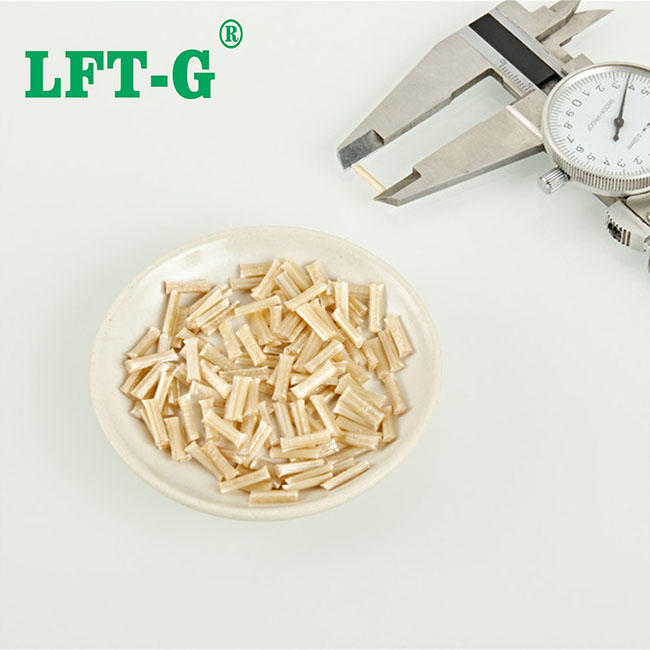
PPS-NA-LGF
poly(o-phthalimide)(PPA):
PPA is a high-temperature resistant material with a melting point of 310-325°C and a heat distortion temperature of 280-290°C. It has a high temperature resistance and is suitable for use in a wide range of applications.
PPA has excellent oil resistance to fuel oil, lubricants and other oils, even at 150 ℃ high temperature.
PPA has excellent dimensional stability and low warpage.
PPA's water absorption is much lower than PA6 or PA66, and its tensile strength remains above 80% even after being immersed in cold water for several years.
PPA has excellent weather resistance. It is also suitable for long-term outdoor use under extreme weather conditions such as high UV, high humidity and high temperature.
PPA has excellent environmental performance and can reach FDA level.
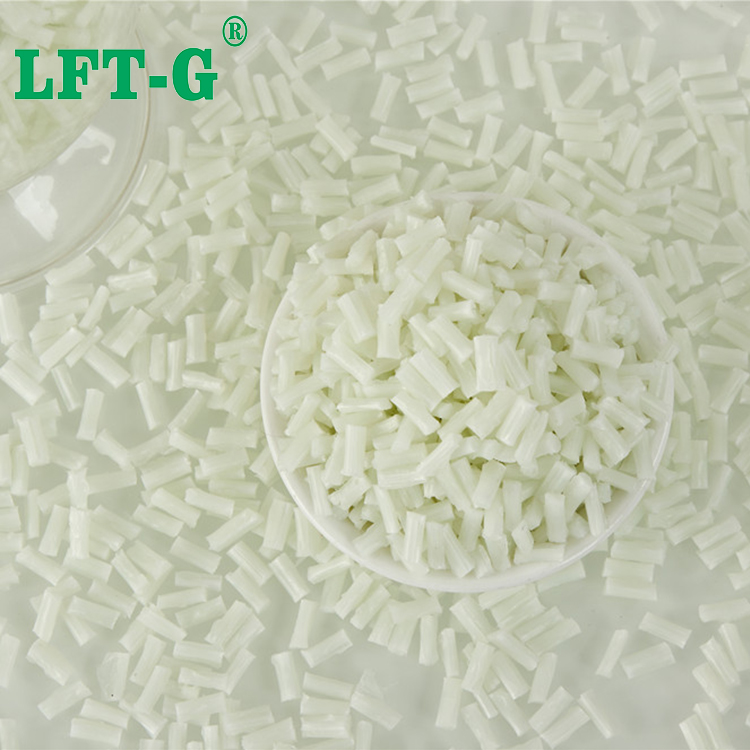
PPA-NA-LGF